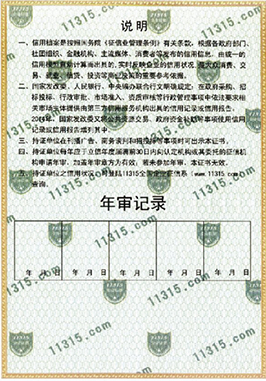- Arabic
- French
- Russian
- Spanish
- Portuguese
- Turkish
- Armenian
- English
- Albanian
- Amharic
- Azerbaijani
- Basque
- Belarusian
- Bengali
- Bosnian
- Bulgarian
- Catalan
- Cebuano
- Corsican
- Croatian
- Czech
- Danish
- Dutch
- Afrikaans
- Esperanto
- Estonian
- Finnish
- Frisian
- Galician
- Georgian
- German
- Greek
- Gujarati
- Haitian Creole
- hausa
- hawaiian
- Hebrew
- Hindi
- Miao
- Hungarian
- Icelandic
- igbo
- Indonesian
- irish
- Italian
- Japanese
- Javanese
- Kannada
- kazakh
- Khmer
- Rwandese
- Korean
- Kurdish
- Kyrgyz
- Lao
- Latin
- Latvian
- Lithuanian
- Luxembourgish
- Macedonian
- Malgashi
- Malay
- Malayalam
- Maltese
- Maori
- Marathi
- Mongolian
- Myanmar
- Nepali
- Norwegian
- Norwegian
- Occitan
- Pashto
- Persian
- Polish
- Punjabi
- Romanian
- Samoan
- Scottish Gaelic
- Serbian
- Sesotho
- Shona
- Sindhi
- Sinhala
- Slovak
- Slovenian
- Somali
- Sundanese
- Swahili
- Swedish
- Tagalog
- Tajik
- Tamil
- Tatar
- Telugu
- Thai
- Turkmen
- Ukrainian
- Urdu
- Uighur
- Uzbek
- Vietnamese
- Welsh
- Bantu
- Yiddish
- Yoruba
- Zulu
Nov . 10, 2024 13:21 Back to list
Understanding HNBR Timing Belt Performance and Maintenance Strategies for Optimal Efficiency
Understanding HNBR Timing Belts A Deep Dive
When it comes to automotive applications, timing belts play a crucial role in ensuring the smooth operation of an engine. Among the various materials used for manufacturing timing belts, Hydrogenated Nitrile Butadiene Rubber (HNBR) has gained significant attention for its superior performance characteristics. This article aims to explore the advantages of HNBR timing belts, their applications, and the reasons for their increasing popularity in modern automotive and industrial settings.
What is HNBR?
HNBR, or Hydrogenated Nitrile Butadiene Rubber, is a synthetic rubber that offers excellent resistance to heat, oil, and wear. This material is produced through the hydrogenation of Nitrile Butadiene Rubber (NBR), which enhances its physical properties and broadens its range of applications. HNBR is renowned for its ability to withstand harsh environments, making it an ideal choice for components exposed to high temperatures or aggressive fluids.
Advantages of HNBR Timing Belts
1. Superior Durability One of the primary advantages of HNBR timing belts is their outstanding durability. They maintain their shape and flexibility under high-stress conditions, significantly reducing the risk of breakage. HNBR belts are less prone to stretch and wear compared to traditional rubber belts, ensuring they perform consistently over time.
2. Resistance to Oils and Chemicals HNBR's composition provides excellent resistance to various oils, fuels, and chemicals. This quality is particularly beneficial in automotive applications, where exposure to engine oil and other fluids is common. Choosing HNBR timing belts helps minimize the risk of degradation caused by these substances, leading to longer service life and reduced maintenance costs.
hnbr timing belt

3. Temperature Stability Another feature that sets HNBR timing belts apart is their ability to perform well in extreme temperatures. They can typically operate in a wide temperature range, from -30°C to +150°C (-22°F to +302°F), without losing their effectiveness. This temperature stability makes them suitable for both cold-start and high-heat conditions, ensuring optimal engine performance throughout.
4. Low Noise and Vibration HNBR timing belts are designed to reduce noise and vibrations during operation. This is an essential quality for modern engines, as quieter operations improve the overall driving experience and lower the chances of noise-related component failure.
5. Lightweight Yet Strong HNBR timing belts are lightweight, which contributes to improved energy efficiency in applications, especially in vehicle dynamics. The reduced weight results in less load on the engine, ultimately translating to better fuel economy and performance.
Applications of HNBR Timing Belts
HNBR timing belts are extensively used in automotive engines, industrial machinery, and even in specialized applications like robotics. In cars, they synchronize the rotation of the crankshaft and camshaft, ensuring that valves open and close at the proper times during each cylinder's intake and exhaust strokes. In industrial machinery, HNBR belts play a vital role in power transmission, providing reliability and efficiency.
Conclusion
As automotive technology continues to evolve, the demand for efficient and durable components increases. HNBR timing belts stand out as a superior choice for various applications due to their resistance to wear, oil, and temperature extremes. With their numerous advantages, these belts are becoming a preferred option for manufacturers and engineers looking to enhance the performance and longevity of their products. By understanding the benefits of HNBR timing belts, consumers and industry professionals can make informed decisions, leading to improved efficiency and reliability.
-
Upgrade Power Steering Pump Belt for Smooth, Quiet Operation
NewsAug.27,2025
-
Precision Timing Belt & Chain: Engine Performance & Durability
NewsAug.26,2025
-
Precision Lathe Drive Belts: Durable & Reliable Performance
NewsAug.25,2025
-
84.5 Serpentine Belt: Durable & Precision Fit for Your Engine
NewsAug.24,2025
-
Premium Ribbed Drive Belts for Quiet Power Transmission
NewsAug.23,2025
-
High-Performance Vehicle Timing Belt for Engine Precision
NewsAug.22,2025

